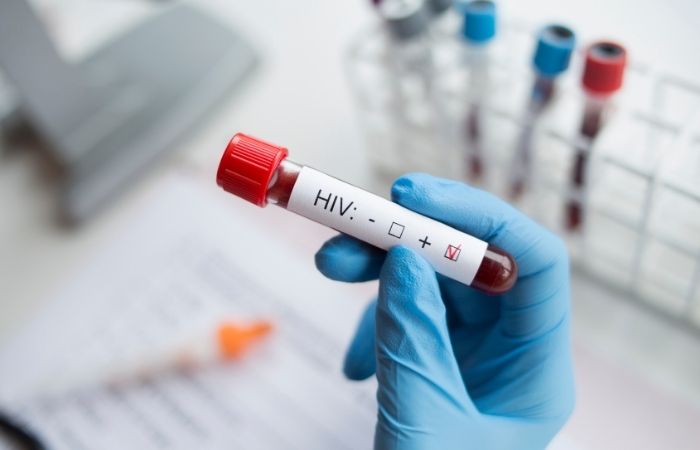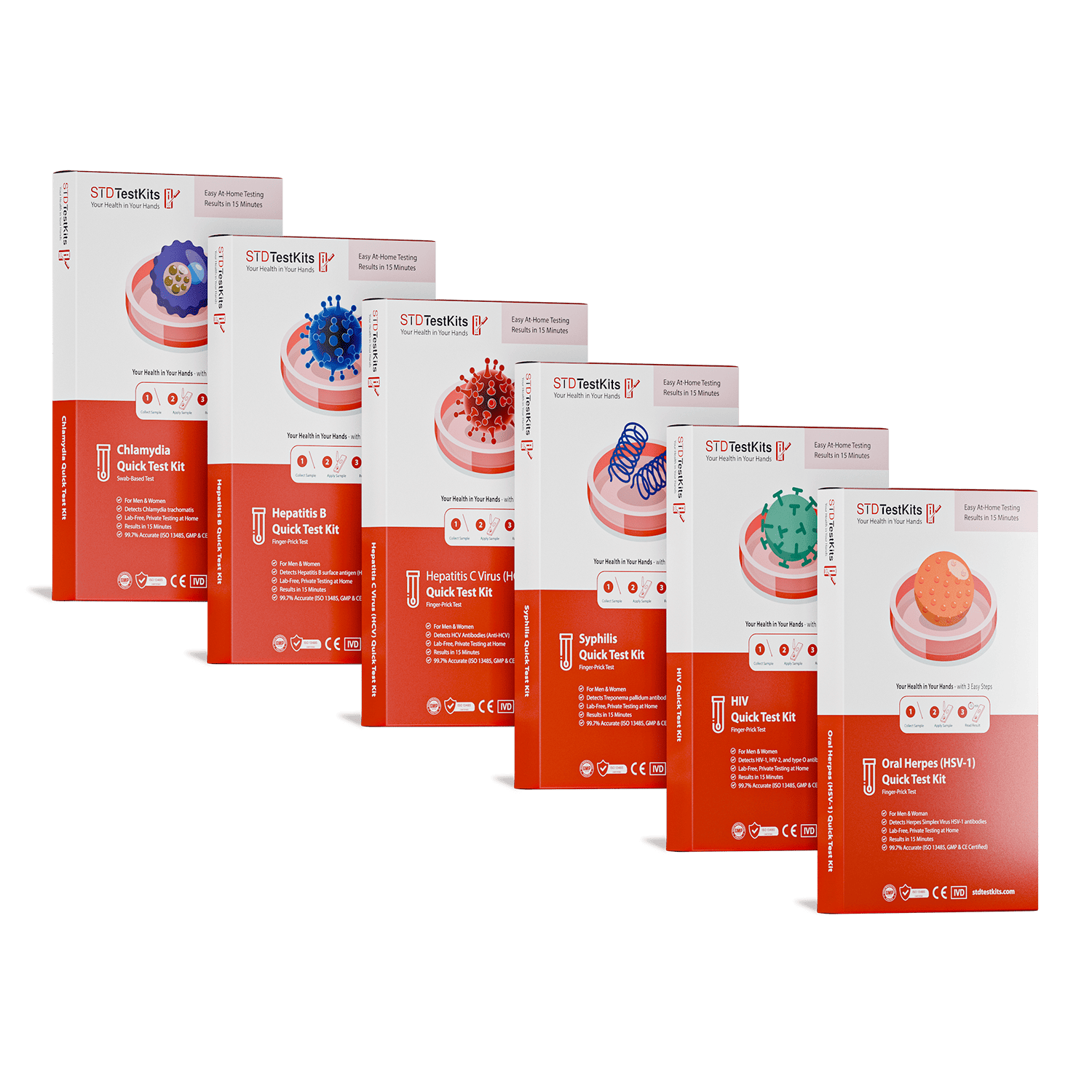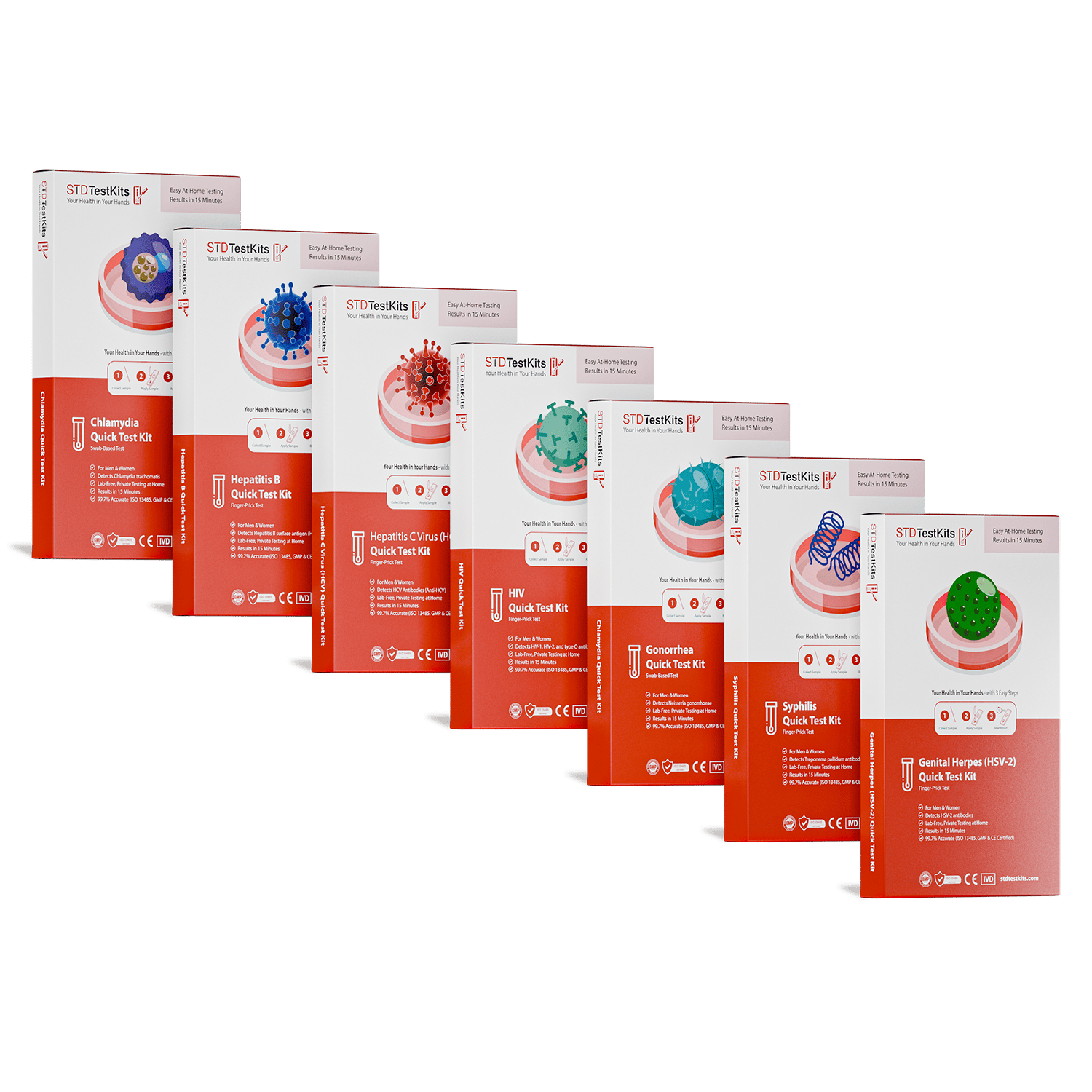The Best STD Test Might Be the One You Take at Home
Quick Answer: You may still need STD testing even if you have no symptoms. Many infections, like chlamydia, gonorrhea, and HPV, can stay silent for months or years. Testing is the only way to know.
Why People Without Symptoms Still Get Tested
Sylvia, 32, had been in a committed relationship for over a year. She’d never had an abnormal Pap smear. No STDs in the past. No reason to worry, or so she thought. During her annual checkup, her provider asked when her last STD screen was. “I haven’t had any new partners,” she replied. Still, they ran a test. It came back positive for chlamydia.
“I was floored,” she later said. “I didn’t even feel sick.”
Stories like Sylvia’s are surprisingly common. According to the CDC, most people infected with chlamydia or gonorrhea report no symptoms. The same goes for HPV and early-stage syphilis. These infections can silently damage reproductive organs, increase HIV risk, or unknowingly pass to partners. Left untreated, they can lead to complications like infertility, chronic pelvic pain, and more.
Even HIV, which most assume would “feel obvious,” can go undetected for years without symptoms, until the immune system is already compromised.
So, why test if nothing feels wrong? Because you don’t wait for a car to catch fire to check the brakes. You check because you care, about yourself, your partners, your future.
What “Routine Testing” Actually Means (And Why It’s Not One-Size-Fits-All)
When we talk about STD screening, it’s easy to assume there’s some universal schedule. But the truth is, testing needs vary dramatically based on lifestyle, exposure, anatomy, and even age.
Jalen, 24, gets tested every three months. He’s on PrEP, dates multiple partners, and says testing makes him feel “like I’m doing maintenance on my body.” Meanwhile, Alicia, 41, who’s been married for years, only got tested during her last pregnancy. Both are doing what makes sense for them, but there’s a lot of gray area between those two examples.
Here’s what the CDC and other major health organizations recommend based on risk level, not symptoms:
Table 1: Testing frequency depends more on behavior and exposure than on symptoms. This chart simplifies major guidance to help readers self-identify risk.
These are just guidelines. Testing is never about judgment, it’s about planning. Maybe you had a one-time thing and want to be safe. Maybe you're starting a new relationship and want a clean slate. You don’t need a reason to care for your health. You just need access.
If you don’t want to go to a clinic, you can order a discreet home test kit and take care of it in private, on your own time. That’s real autonomy.

People are also reading: STD Symptoms in Pregnancy, When Spotting & Fatigue Don’t Feel Right
But I Always Use Protection, Do I Still Need to Test?
This is one of the most common assumptions: “I used a condom, so I’m good.” And while protection dramatically reduces risk, it doesn’t eliminate it.
Let’s break it down. Condoms don’t cover every area that could transmit an STD, like the base of the penis, scrotum, labia, or mouth. Herpes, syphilis, and HPV are all transmitted through skin-to-skin contact, not just fluids. That means you can use a condom perfectly and still contract an infection through oral sex or even mutual masturbation if fluids or lesions are involved.
Protection also doesn’t guard against past exposures that may not have been disclosed. You might trust your partner completely, but if they didn’t know they were infected, they couldn’t have told you. And that’s how silent infections stay silent.
Diego, 29, tested positive for HPV during a routine screening. He’d been using condoms regularly but hadn’t been tested in over two years. “It wasn’t that I felt unsafe,” he said. “It just wasn’t on my radar.” The diagnosis caught him off guard, and also gave him the info he needed to protect future partners.
Using protection is smart. Getting tested is smarter. Doing both? That’s care in action.
When Should You Test? Timing Matters More Than You Think
Imagine this: it’s been five days since you hooked up with someone new. Everything seemed fine, but now you’re panicking. You take a rapid test. It’s negative. Relief floods in, for a while.
But here’s the kicker: many STDs won’t show up on tests that soon. That’s where the concept of a “window period” comes in. It’s not about when you got infected, it’s about when your body produces enough detectable material (like antibodies or bacterial DNA) to register on a test. If you test too early, you might get a false negative. Not because the test failed, but because your body hadn’t reacted yet.
Let’s be blunt: the anxiety to test immediately is real. But early results can lull people into a false sense of security. That’s why retesting at the right time, usually 1–3 weeks later, is just as important as the first test.
Table 2: STD detection timing varies. These ranges reflect when the test is most accurate, not when infection starts.
Melanie, 26, tested five days after a condom broke. Negative. But three weeks later, she noticed vaginal discomfort. She tested again. Positive for gonorrhea. “I wish someone told me that testing too early might not catch it,” she said. This second test gave her clarity, and treatment.
Early testing has its place, especially after a known high-risk exposure. But knowing when to retest gives you the full picture.
Whether it’s day 3 or day 30, this combo test kit can give you answers at home, privately and quickly. You don’t need to explain your choices to anyone, just take the step when you’re ready.
What If Your Last Test Was Months Ago?
It happens all the time. You tested negative six months ago. Maybe you were even in a dry spell or monogamous phase. But things changed. A new partner. A night out. A break you weren’t expecting. Does that old test still “count”?
Not really. STD testing doesn’t give you a forever-pass, it reflects a snapshot in time. If anything’s changed since your last screen, it’s worth rechecking. Even if nothing changed but your peace of mind, that’s reason enough.
Tariq, 35, hadn’t tested since a breakup last fall. He hadn’t been sexually active until recently, when he met someone new. “We had the talk, and she said she was clean. But I realized, I hadn’t checked myself in a while,” he said. He ordered a test online that night. It came back clear, and gave him the confidence to move forward honestly.
You don’t need permission to test again. You don’t even need a reason. If your gut says it's time, listen. Testing doesn’t mean something’s wrong. It means you care enough to check.
The Myth of “Clean”, Why Language Matters
Let’s talk about language. People say “I’m clean” when they mean they’ve tested negative. But that framing implies something dirty or shameful about a positive result. And that stigma is part of what stops people from getting tested in the first place.
STDs are infections. Common ones. Treatable ones. And yes, sometimes lifelong ones like herpes or HIV. But none of them make someone “dirty.” Words matter. So instead of asking, “Are you clean?” try: “When was your last test?” or “Have you ever been tested?”
Reframing the conversation can reduce shame and normalize care. It also opens the door for honest disclosure. No one owes you a perfect history. But you do owe yourself the clarity of regular testing, without shame.
Need a judgment-free place to start? STD Rapid Test Kits ships discreetly, with no awkward clinic lines or explaining yourself. Testing doesn’t have to be a confession. It can be a ritual of care.
What If You Test Positive, Even Without Symptoms?
Jessa, 28, was shocked when her at-home test came back positive for trichomoniasis. “I felt totally normal. No smell, no itch, no anything,” she said. Her first reaction was panic. Her second? Silence. She wasn’t sure who to tell, or how.
Testing positive without symptoms can feel like a betrayal of your body. But it’s also a gift. Because now you know. And knowing means treatment. It means stopping transmission. It means you caught it before it did long-term damage.
Here’s the move: follow up with a provider. Many STDs, like chlamydia, gonorrhea, syphilis, and trich, can be cured with a short course of antibiotics. For lifelong infections like herpes or HIV, treatment helps manage outbreaks and lowers transmission risk to almost zero.
But treatment isn’t just for you, it’s for your partner(s), too. That’s where the hard part comes in: telling them. And yes, that conversation can suck. But it can also be respectful, even healing. Here’s a simple script: “Hey, I just got tested and found out I have [X]. You should get checked too. Let me know if you want to talk about it.”
You don’t have to carry it alone. Many providers offer anonymous partner notification services. And if you used a home test, you can direct your partner to do the same. That’s not weakness, it’s courage in action.

People are also reading: Chlamydia from Fingering, Toys, or Oral? It’s Possible.
Retesting After Treatment: When and Why It Matters
After treatment, it’s tempting to assume the job is done. But depending on the STD and the treatment used, retesting may still be necessary. Sometimes it’s to confirm clearance. Other times, it’s to detect reinfection, which is surprisingly common.
Take chlamydia. The CDC recommends retesting about three months after treatment, not because the meds didn’t work, but because many people are re-exposed, often by untreated partners. Same goes for gonorrhea. Even with perfect treatment, a new exposure means a new risk.
With herpes, you don’t need to “retest” in the traditional sense. But if symptoms appear, or if you test negative too soon after exposure, it’s smart to test again weeks later. For HIV, post-exposure testing follows a specific timeline: initial screen at 2–4 weeks, follow-up at 3 months.
Niko, 33, tested positive for syphilis after what he thought was a healed rash. He got treated, but waited too long to retest. By the time he did, the infection had progressed into a latent phase, harder to detect, harder to treat. “I should’ve followed up sooner,” he said. “But I thought the shot fixed it.”
Knowing when to retest is just as crucial as the first test. It’s not about obsession, it’s about resolution. If you’re unsure, combo testing kits can make rechecking simple and private.
Yes, It’s Private. Yes, It’s Discreet. Yes, It’s Still Real Testing.
Let’s dismantle another myth: that at-home testing is somehow less “real” than going to a clinic. It’s not. Many FDA-cleared home tests use the same collection methods (like urine, swabs, or blood drops) and the same lab-grade processing. The only difference? You get to do it in your own space, without waiting rooms, small talk, or side-eyes.
Discreet packaging means nothing on the label says “STD.” Results are private, usually accessed through secure online portals. No one sees them but you. Some kits even offer telehealth follow-up if you test positive.
For people in rural areas, queer relationships, religious households, or just with complicated emotions around sexuality, home testing isn’t just convenient. It’s survival. It’s agency.
Monica, 45, lives two hours from the nearest clinic. Her job doesn’t offer PTO. She says at-home tests “made it possible to actually take care of myself without burning a day or explaining myself to a stranger.” That’s what access looks like. That’s what privacy should feel like.
You’re Not Overreacting. You’re Being Proactive.
If there’s one thing to walk away with, it’s this: you don’t need symptoms to get tested. You don’t need proof. You don’t need permission. If something inside you says check, it’s worth checking.
Whether you’re testing for the first time, the tenth time, or just because your gut won’t quiet down, it’s a move rooted in care. For you. For your partners. For your peace of mind.
STD Rapid Test Kits offers discreet, fast, and accurate ways to take that step, on your terms. Whether it’s a combo kit or a single test, you get clarity. That’s not paranoia. That’s power.
And if it comes back positive? You’re not alone. You’re not dirty. You’re just informed. And informed people take action.
FAQs
1. Can I really have an STD and feel totally fine?
Yes, and it happens more often than you might think. Chlamydia, gonorrhea, and even HIV can live in your body for weeks, months, or even years without showing any symptoms. You might feel fine, but that doesn't mean you're safe. You shouldn't wait until you have a cavity to care about testing.
2. How often should I get tested if I’m not sleeping around?
"Sleeping around" is outdated and judgy, let’s call it having a sex life. If you're seeing new people, the general rule is every 3–6 months. If you're in a monogamous relationship and tested together at the start, once a year might be enough. But if anything changes, new partner, condom slip, a gut feeling, it’s totally valid to test sooner.
3. Do condoms mean I don’t need to worry?
Condoms are great. They greatly lowered the risk. But they don't work like magic. Skin-to-skin contact can still spread STDs like HPV and herpes. So, while condoms are a good first line of defense, testing is still your safety net, especially if you've had more than one partner or are unsure about something.
4. I got tested a few days after a hookup. Am I good?
Maybe. Maybe not. It depends on which STD you're checking for. Some infections need a week or two to show up on tests, others, like HIV or syphilis, may take longer. If it’s been under 7 days, you might be testing too early. Think of early testing like checking your phone before it finishes charging, helpful, but not the full picture.
5. Do I need to retest after getting treated?
In most cases, yes. Especially for bacterial STDs like chlamydia and gonorrhea, you’ll want to test again around the 3-month mark to make sure you didn’t get reinfected (or never fully cleared it). One round of antibiotics doesn’t give you immunity. If your partner wasn’t treated too, it's like trying to dry off in a rainstorm.
6. My partner says they’re “clean.” Should I still test?
Let’s retire the word “clean” when we’re talking about health. It’s stigmatizing and doesn’t say much. Instead, ask: “When was your last test, and what did you get checked for?” A lot of people don’t know that standard STI panels often miss things like herpes or HPV. Testing is about shared responsibility, not suspicion.
7. Can I get an STD even if we didn’t have penetrative sex?
Yes. Oral sex, skin-to-skin contact, sharing toys, even mutual touching with fluids involved, these can all pass infections. Herpes, syphilis, and HPV are especially sneaky. Just because it wasn’t “all the way” doesn’t mean it was risk-free. That said, don’t panic, just test when it makes sense and move forward informed.
8. Will anyone else find out I got tested?
Not unless you tell them. At-home tests are private. They come in discreet packaging, and results are accessed online through secure portals. Your doctor won’t know unless you choose to share. No awkward pharmacy pick-ups, no explanations. Your sexual health = your business.
9. How do I talk to a partner about testing without making it weird?
It doesn’t have to be weird. Try, “Hey, I’ve been thinking we should both get tested, just to be safe and respectful.” Or: “I care about both of us, and I feel better when we’re on the same page about health stuff.” You can even make it flirty, turn it into a pre-date ritual or trade test results like love notes. Okay, maybe not love notes, but you get the idea.
10. I’ve never tested before and I’m scared. Is that normal?
So normal. The first test can feel like a leap, like opening a message you’re not sure you want to read. But knowledge is power. And no matter what the result is, there’s a next step. There’s treatment. There’s support. And there's a hell of a lot more people living with STDs than you probably think. You’ve got this.
You Deserve Answers, Not Assumptions
You don't have to wait until something feels wrong to check on your health. Getting tested for STDs isn't just about reacting; it's also about protecting yourself, making plans, and getting your mind back on track.
Don’t let silence fool you. Many infections don’t knock loudly. But the good news? You don’t have to guess. This combo STD test kit gives you the full panel, fast results, and total privacy. Take the step. You’re worth knowing.
How We Sourced This Article: We combined current guidance from leading medical organizations with peer-reviewed research and lived-experience reporting to make this guide practical, compassionate, and accurate.
Sources
1. Getting Tested for STIs – CDC
2. STI Screening Recommendations – CDC
3. STD Testing: When Should I Be Tested? – Mayo Clinic
4. STD Diagnosis & Treatment – Mayo Clinic
5. STI Screening and Treatment Guidelines (NCBI Bookshelf)
6. USPSTF Recommendation: Chlamydia & Gonorrhea Screening
7. Screening for Genital Herpes – CDC
8. Recommendations for Providing Quality Sexually Transmitted Disease Clinical Services – CDC MMWR
About the Author
Dr. F. David, MD is a board-certified infectious disease specialist focused on STI prevention, diagnosis, and treatment. He blends clinical precision with a no-nonsense, sex-positive approach and is committed to expanding access for readers in both urban and off-grid settings.
Reviewed by: L. Tran, MPH | Last medically reviewed: October 2025
This article is just for information and should not be used as medical advice.







